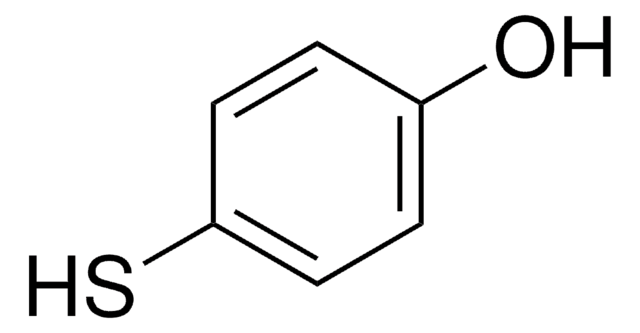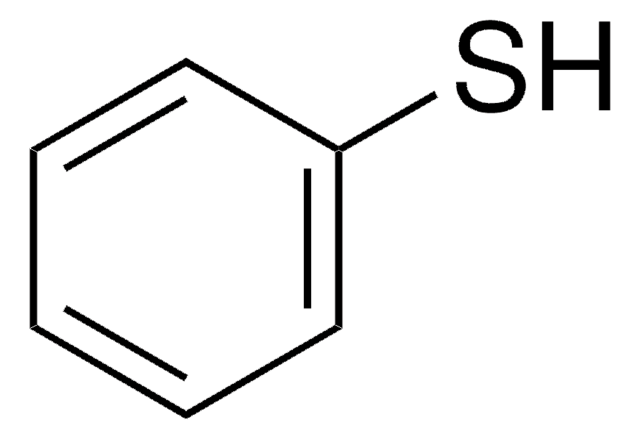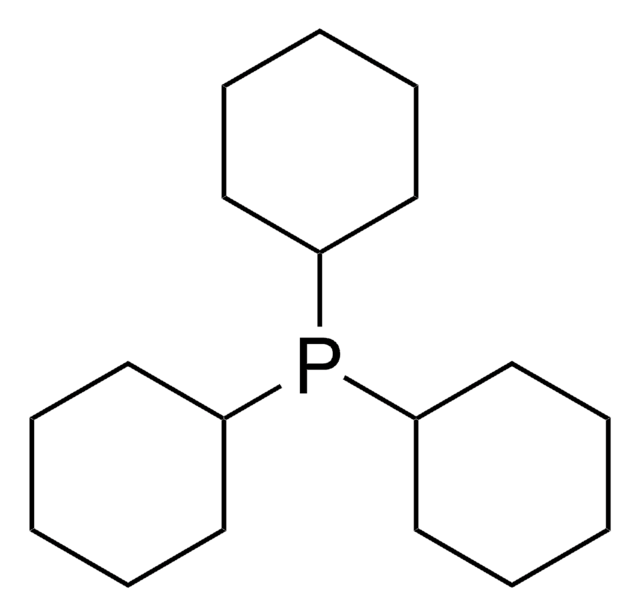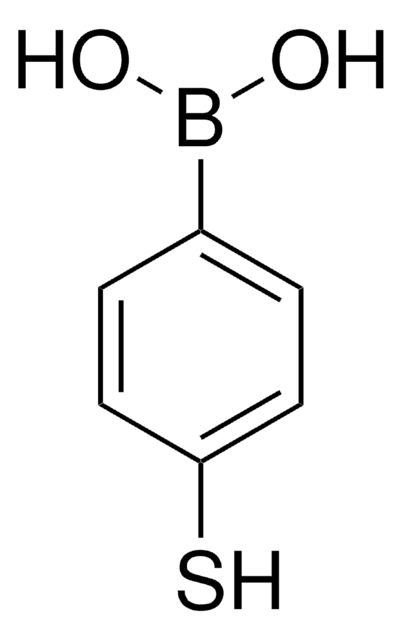653152
4-Mercaptophenylacetic acid
97%
Synonym(s):
(4-Carboxymethyl)thiophenol, (4-Sulfanylphenyl)acetic acid, 2-(4-Mercaptophenyl)acetic acid, 2-(4-Sulfanylphenyl)acetic acid, 4-Mercaptobenzeneacetic acid, p-Mercaptophenylacetic acid
About This Item
Recommended Products
Quality Level
Assay
97%
form
solid
mp
105-109 °C (lit.)
storage temp.
2-8°C
SMILES string
OC(=O)Cc1ccc(S)cc1
InChI
1S/C8H8O2S/c9-8(10)5-6-1-3-7(11)4-2-6/h1-4,11H,5H2,(H,9,10)
InChI key
ORXSLDYRYTVAPC-UHFFFAOYSA-N
General description
Application
It can be used:
- On-resin preparation of peptide-α thiophenylesters which are used in a chemical ligation process for the chemical synthesis of peptides.
- In one pot deprotection of (acetamido-methyl)cysteine following native chemical ligation and/or desulfurization method for the preparation of peptides.
- Palladium facilitated deprotection of N-terminal cysteine through native chemical ligation method for the preparation of synthetically challenging proteins.
Signal Word
Danger
Hazard Statements
Precautionary Statements
Hazard Classifications
Eye Dam. 1 - Skin Irrit. 2 - STOT SE 3
Target Organs
Respiratory system
Storage Class Code
11 - Combustible Solids
WGK
WGK 3
Flash Point(F)
Not applicable
Flash Point(C)
Not applicable
Personal Protective Equipment
Regulatory Listings
Regulatory Listings are mainly provided for chemical products. Only limited information can be provided here for non-chemical products. No entry means none of the components are listed. It is the user’s obligation to ensure the safe and legal use of the product.
JAN Code
653152-VAR:
653152-1G:
653152-5G:
653152-BULK:
Choose from one of the most recent versions:
Already Own This Product?
Find documentation for the products that you have recently purchased in the Document Library.
Customers Also Viewed
Our team of scientists has experience in all areas of research including Life Science, Material Science, Chemical Synthesis, Chromatography, Analytical and many others.
Contact Technical Service



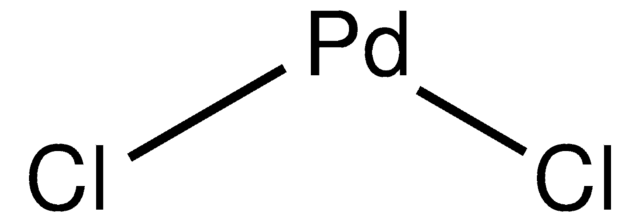
![(Ir[dF(CF3)ppy]2(dtbpy))PF6](/deepweb/assets/sigmaaldrich/product/structures/982/913/02dd8ddd-6deb-40a0-ab9b-07b18f1abb09/640/02dd8ddd-6deb-40a0-ab9b-07b18f1abb09.png)
